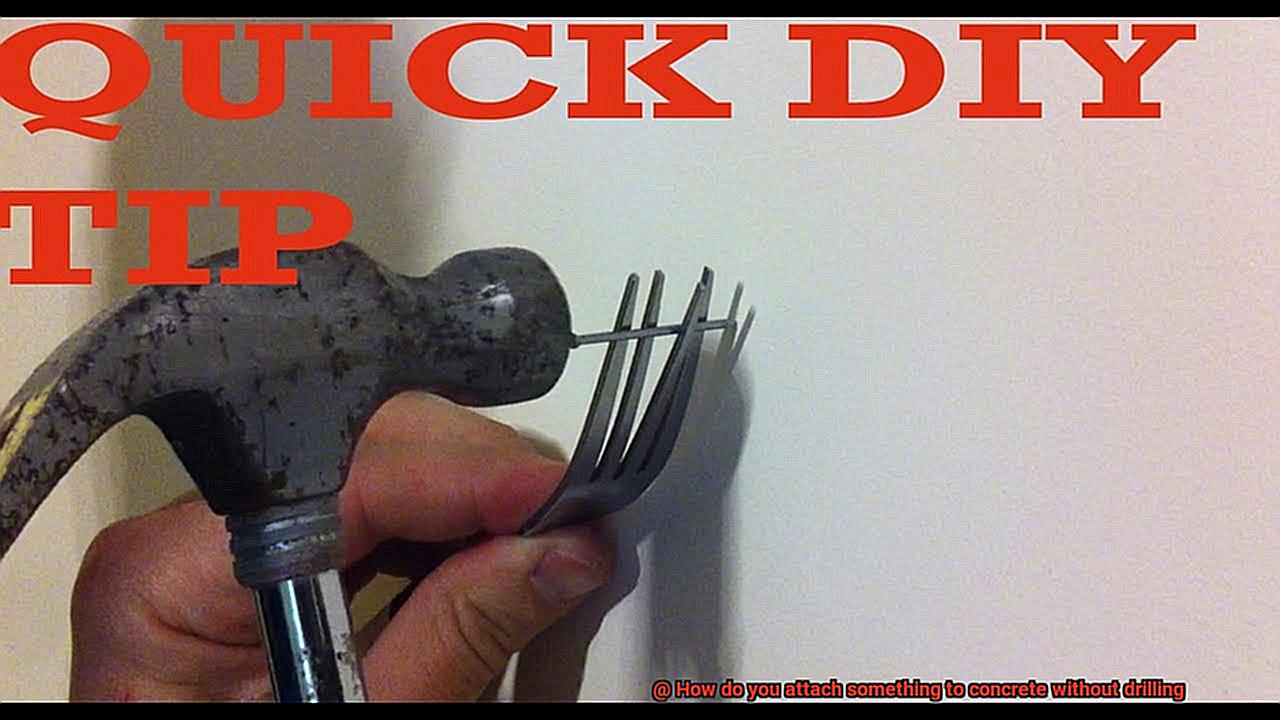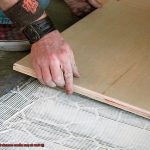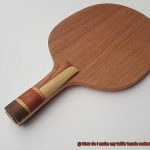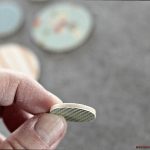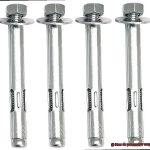Are you a DIY fanatic, facing the daunting task of hanging something on a concrete wall but cringing at the thought of drilling into that unyielding surface? Or maybe you’re a renter who wants to add some personal flair to your space without breaking any lease agreements? Well, fret no more. We’ve got just the solution for you: attaching objects to concrete without drilling.
Concrete walls may appear impenetrable, but with a sprinkle of ingenuity and a pinch of resourcefulness, there are plenty of alternative methods that can get the job done. Whether it’s hanging up a picture frame, installing a shelf, or mounting a TV, this guide will equip you with clever hacks to conquer those concrete conundrums.
The secret to securely attaching objects to concrete lies in harnessing adhesive technologies and employing savvy anchoring techniques. From time-tested adhesive methods to lesser-known tricks of the trade, we’ve got all bases covered. Say goodbye to noisy drills, messy installations, and permanent damage – we’re about to uncover the world of damage-free concrete attachments.
In this blog post, we’ll explore various methods and materials that will help you fasten objects to concrete walls, ceilings, and floors without resorting to drilling. We’ll delve into industrial-strength adhesives solutions, advanced mounting tapes, and ingenious anchoring alternatives like hooks, magnets, and even zip ties.
So come along as we unravel the secrets of attaching objects to concrete in unconventional ways. Get ready for an exhilarating journey that will revolutionize your decorating adventures forever.
What is Attaching Something to Concrete Without Drilling?
Contents
- 1 What is Attaching Something to Concrete Without Drilling?
- 2 Advantages of Attaching Objects to Concrete Without Drilling
- 3 Preparing the Surface for Adhesive Bonding
- 4 Types of Adhesives for Attaching Objects to Concrete without Drilling
- 5 Applying the Adhesive
- 6 Specialized Adhesive Tapes for Attaching Objects to Concrete
- 7 Considerations When Attaching Heavy or Large Objects to Concrete
- 8 Permanent vs Non-Permanent Bonding Methods
- 9 Conclusion
When it comes to attaching something to concrete without drilling, homeowners and DIY enthusiasts often face the challenge of finding secure and convenient alternatives. While drilling may provide the most reliable attachment, there are several innovative methods available that can offer strong and durable connections. In this article, we will explore a range of techniques for attaching objects to concrete surfaces without the need for drilling, offering solutions for every weight and type of object.
Method 1: Adhesive Anchors or Epoxy Glue
For a reliable and long-lasting attachment, adhesive anchors or epoxy glue are excellent options. These products are specifically designed to bond with concrete surfaces, ensuring a robust connection. Before applying the adhesive, it is crucial to thoroughly clean the concrete surface, removing any dust or debris with a wire brush or vacuum cleaner.
Once the surface is pristine, carefully follow the manufacturer’s instructions to apply the adhesive correctly. Choosing an adhesive suitable for both the concrete type and the material of the object being attached is essential. Epoxy-based adhesives are particularly favored due to their exceptional bonding strength, making them suitable for heavy loads and extreme conditions.
Method 2: Mechanical Anchors
When extra strength is required or dealing with heavier objects, mechanical anchors are an ideal choice. These anchors come in various types, including wedge anchors, sleeve anchors, and expansion anchors. By inserting them into pre-drilled holes in the concrete and expanding or wedging them into place, they provide a secure attachment capable of withstanding significant loads.
Method 3: Adhesive Tapes or Mounting Strips
For lightweight objects or temporary attachments, adhesive tapes or mounting strips designed specifically for concrete surfaces offer a simple and effective solution. Featuring strong adhesive backing, these tapes adhere securely to the concrete without the need for drilling. They are easy to apply and remove without leaving any residue or causing damage.
Method 4: Specialized Concrete Fasteners
In situations where drilling is not feasible or desired, specialized concrete fasteners provide an alternative solution. These fasteners boast unique designs that firmly grip onto the concrete surface. They can be easily installed by hammering them into place or using specialized tools for insertion. Their versatility makes them particularly useful for a wide range of applications.
Advantages of Attaching Objects to Concrete Without Drilling
When it comes to attaching objects to concrete surfaces, traditional drilling methods have long been the norm. However, there is a world of possibilities beyond the drill. In this article, we will delve into the captivating advantages of attaching objects to concrete without drilling. Discover how you can save money, preserve structural integrity, enjoy flexible placement options, achieve enhanced aesthetics, and easily reverse the process.
Cost Savings:
Bid farewell to expensive tools and equipment such as drills, drill bits, and anchors by embracing non-drilling methods. This is a game-changer for DIY enthusiasts and occasional users who can now complete their projects efficiently without investing in specialized tools. Time and money are saved with every attachment.
Preservation of Structural Integrity:
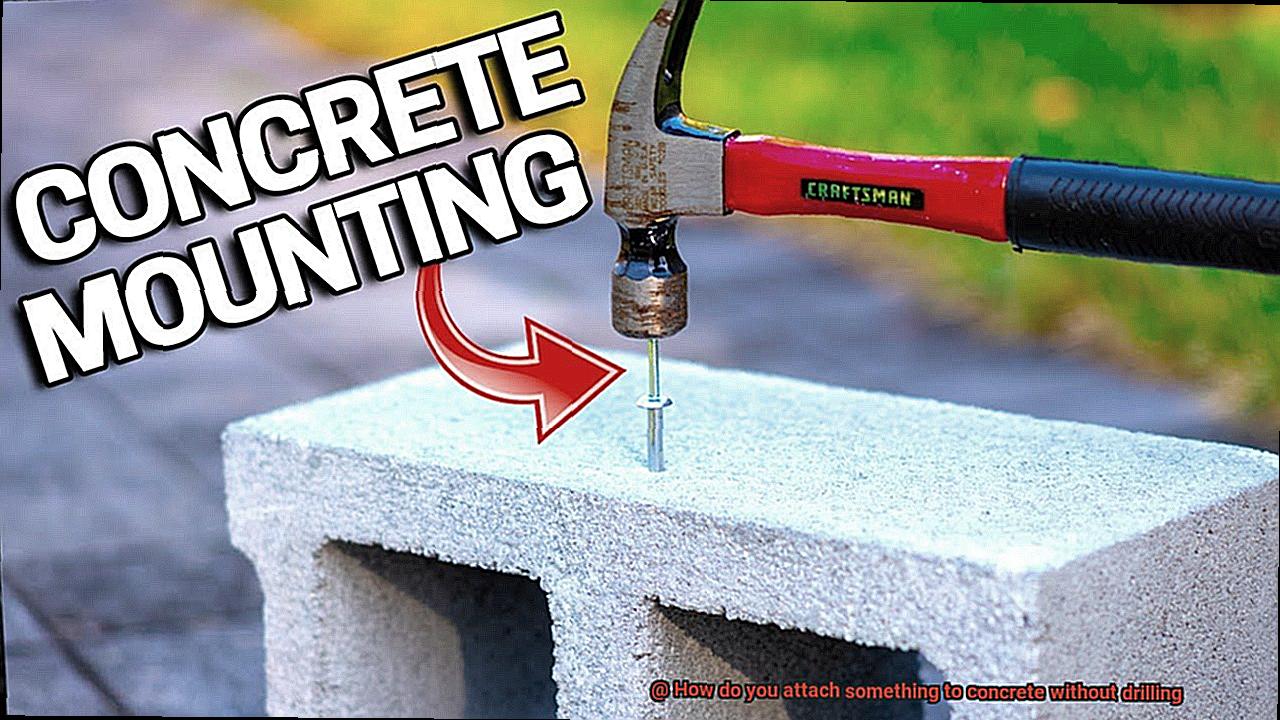
Drilling holes into concrete creates vulnerabilities that can weaken its structural integrity over time. Avoid the risks of cracks and structural issues by opting for alternative methods like adhesives or mechanical fasteners. These innovative techniques ensure that your concrete remains strong and undamaged, guaranteeing long-lasting stability.
Flexibility in Placement:
Embrace the freedom to attach objects anywhere on your concrete surface without restrictions imposed by hole placement. Unlike traditional drilling methods, non-drilling options eliminate the need for meticulous planning to maintain stability and functionality. Let your creativity run wild as you explore unconventional placements.
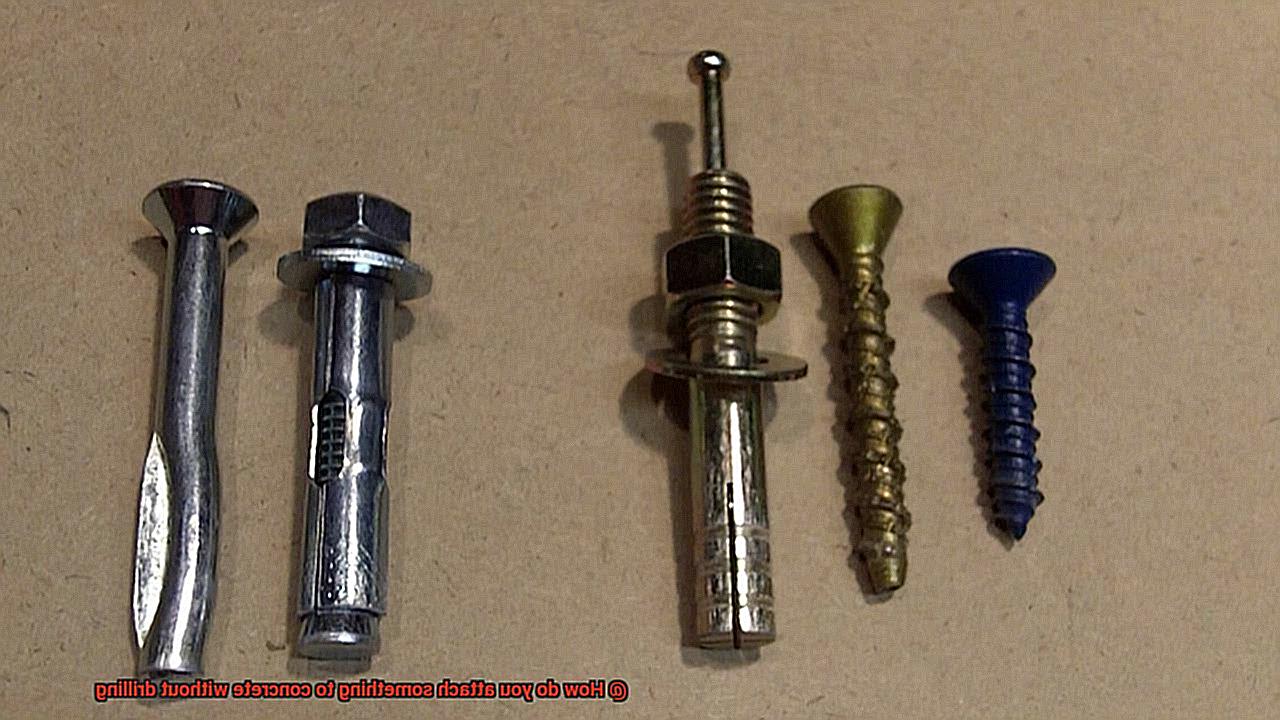
Enhanced Aesthetics:
Say goodbye to unsightly holes and anchors protruding from your concrete surface. Non-drilling methods provide a clean and seamless finish, enhancing the visual appeal of your project. This advantage is particularly valuable for decorative or architectural applications where maintaining the pristine appearance of the concrete is paramount.
Easy Reversibility:
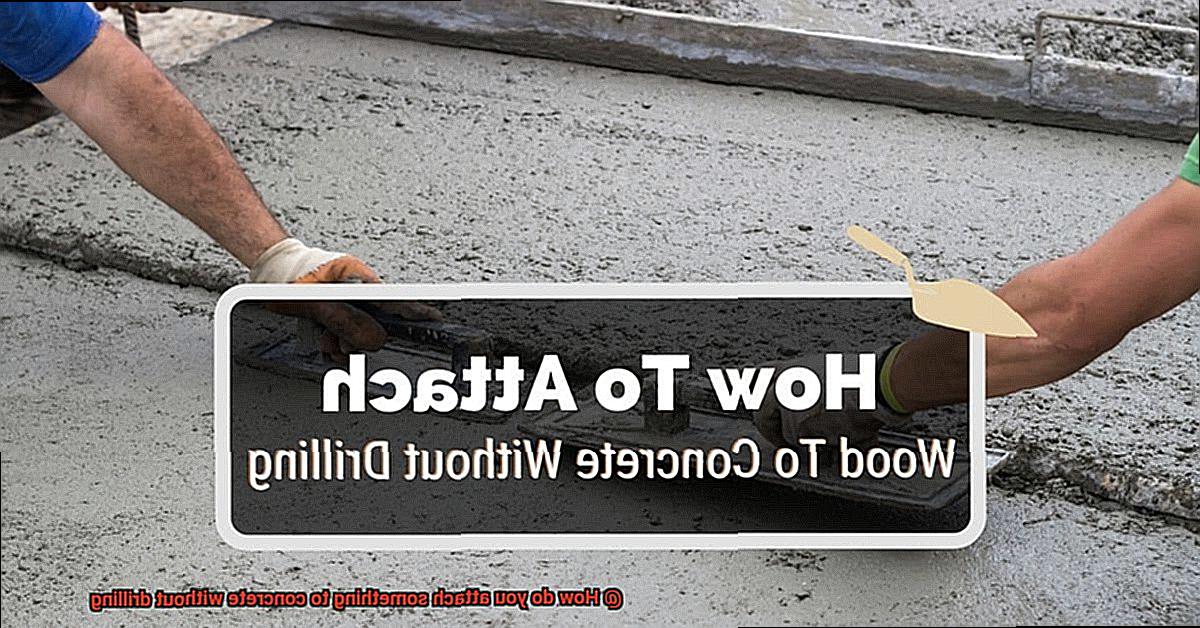
Enjoy the convenience of easy removal or repositioning of attached objects when using non-drilling methods. Unlike drilled holes that leave permanent marks, adhesives or mechanical fasteners can be effortlessly removed without a trace. This flexibility is especially beneficial for temporary installations or situations where future changes may be required.

Preparing the Surface for Adhesive Bonding
Imagine having the power to create a strong bond without the need for drilling. With the right preparation techniques, you can transform concrete into a reliable foundation for your projects. So, let’s delve into the captivating journey of surface preparation and unlock the secrets to an enduring bond.
Step 1: The Pristine Canvas
Embarking on any bonding adventure requires a pristine canvas. Dust, dirt, and debris are sworn adversaries of adhesives. Armed with your trusty broom or vacuum cleaner, banish these foes from the surface. Then, with a damp cloth or mop, wipe away any lingering grime. Behold. The first step towards an impeccable bond has been accomplished.
Step 2: Bidding Farewell to Coatings
Now it’s time to bid farewell to any existing coatings or sealants on our concrete surface. These cunning culprits can sabotage the adhesive’s potential. Choose your weapon wisely – whether it be a chemical stripper or the power of sanding and grinding – and eliminate these barriers with determination.
Step 3: Unleashing Texture
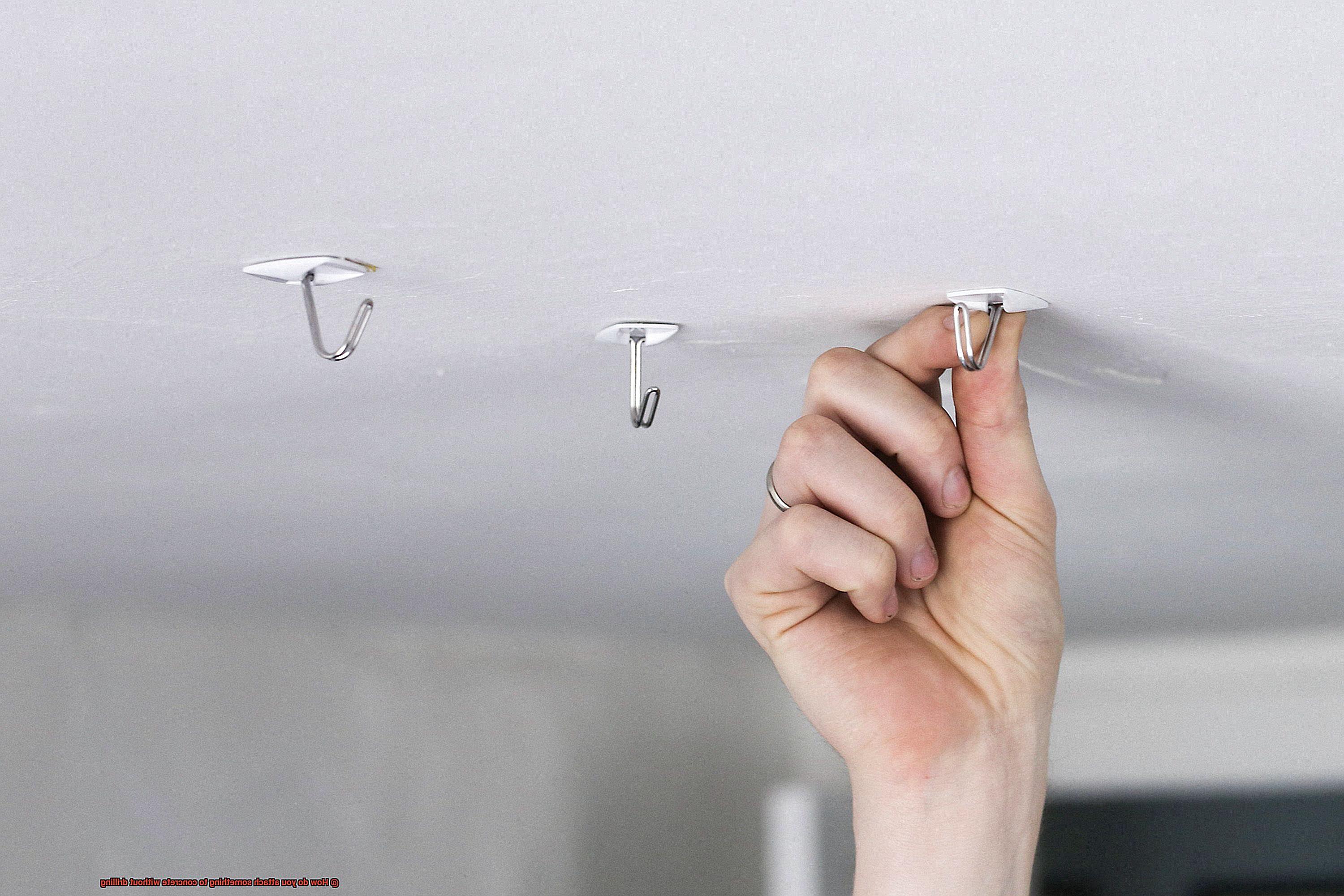
The smoothness of concrete can pose a challenge for bonding, but fear not. We shall embrace our inner artist and unleash texture upon our surface. Armed with a wire brush or sandpaper, we shall create small scratches and grooves that invite our adhesive to latch on firmly. Alternatively, we can employ a chemical etching solution that dances with the concrete, leaving behind a rougher texture.
Step 4: The Flawless Finish
After our roughening endeavors, it is imperative to achieve a flawless finish. Any residue or dust left behind may jeopardize our bond’s strength. Employ your trusted vacuum cleaner or a clean cloth dampened with water or a suitable solvent. With meticulous care, remove any remnants of our surface preparation escapades.
Step 5: Addressing Imperfections
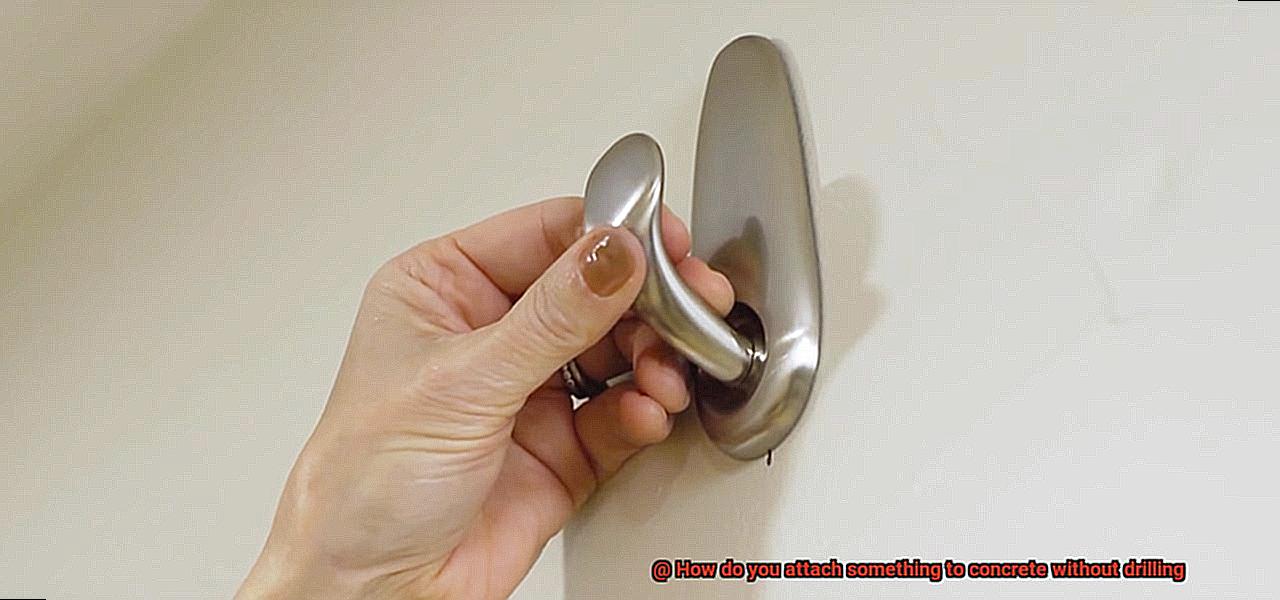
Just like in life, imperfections on our concrete surface need tender love and care. Fill small cracks with an appropriate concrete repair material, ensuring a smooth and level playing field for our bonding adventure. For larger cracks or damaged areas, seeking the expertise of a professional is a wise choice.
Types of Adhesives for Attaching Objects to Concrete without Drilling
Are you in a bind, needing to attach objects to concrete without drilling? Fear not, for adhesives are the unsung heroes of the attachment world. Adhesives possess the magical ability to create a sturdy and enduring bond between objects and concrete surfaces. In this comprehensive guide, we will delve into the diverse array of adhesives at your disposal for attaching objects to concrete without drilling.
Epoxy Adhesives
This dynamic duo is composed of two components, a resin and a hardener, which must be blended before application. Once applied, they wield an unbreakable bond that can withstand even the most demanding circumstances. Epoxy adhesives are particularly ideal for heavy objects subjected to vibrations or stress, ensuring your attachment remains rock-solid.
Construction Adhesives
Behold the mighty construction adhesive, formulated explicitly for construction projects and capable of performing miracles on concrete surfaces. Packaged in convenient tubes, this adhesive can be directly applied to the surface, forming a robust bond that gradually cures over time. Construction adhesives exhibit exceptional adhesion and flexibility, making them suitable for bonding various materials such as wood, metal, plastic, or ceramic.
General-Purpose Adhesives
For lighter objects or temporary installations, general-purpose adhesives like multipurpose glue or contact cement swoop in as your saving grace. These adhesives require no mixing and boast ease of application. Simply spread them across the concrete surface, attach your object with confidence, and voila. However, bear in mind that their strength may not match that of epoxy or construction adhesives, rendering them more suitable for lighter applications.
Specialty Adhesives
In the realm of attachment, sometimes a one-size-fits-all approach won’t suffice. Enter specialty adhesives, meticulously designed to tackle unique challenges. These specialized adhesives cater to specific tasks, such as attaching tiles to concrete surfaces or bonding wood to concrete. Their distinct features and formulations ensure optimum performance for their intended purposes. So, if you have a specific project in mind, seek out these tailored solutions that cater specifically to your needs.
Adhesive Tapes
When a swift and hassle-free attachment is your goal, adhesive tapes come to the rescue. Crafted from robust double-sided adhesive material, these tapes guarantee a secure bond between the object and the concrete surface. Simply press them firmly onto both surfaces, and you’re good to go. Adhesive tapes are particularly valuable for temporary installations or situations where drilling is not feasible.
Applying the Adhesive
In our previous section, we delved into the awe-inspiring world of adhesives and their remarkable ability to create robust bonds without drilling. Now, let’s embark on a journey through the intricate process of applying adhesive to a concrete surface.
The first step on this mesmerizing path is selecting the perfect adhesive for your specific application. Epoxy, construction adhesive, or masonry adhesive – each type possesses its own set of unique strengths and limitations. So, take a moment to explore their characteristics and choose the adhesive that best aligns with your needs.
With the ideal adhesive in hand, it’s time to welcome the concrete surface into a world of cleanliness. Grab a wire brush or unleash the power of a pressure washer to eliminate any dirt, dust, or grease that might dare to interfere with the bonding process. Remember, a pristine surface sets the stage for a triumphant bond.
Now that your concrete surface gleams with purity, let’s take it one step further. Embrace the art of roughening by caressing it gently with sandpaper or a coarse-grit abrasive pad. This simple act magnifies the adhesive’s gripping power by creating additional surface area for it to embrace. It’s like giving your adhesive a secret weapon.
Prepare yourself for the grand finale – applying the adhesive itself. But wait. Before you dive in, pause and savor the wisdom found within the manufacturer’s instructions. These sacred words hold the key to your bonding success. Apply the adhesive evenly and precisely, ensuring you strike the perfect balance. Too little will leave you grasping for strength, while excessive amounts may lead to a messy affair.
For those who seek perfection in their adhesive application, consider enlisting the aid of a notched trowel or caulk gun. These trusty companions lend their expertise, ensuring the adhesive spreads evenly across the attachment surface. It’s like having a skilled artist guiding your hand to create a masterpiece of bonding.
Now, the moment of truth has arrived – it’s time to join the attachment with the concrete surface. Embrace the power of your touch as you firmly press the two together. Let them become one through maximum contact and harmonious bonding. And for those attachments that prove particularly stubborn, don’t hesitate to hold or clamp them in place until the adhesive sets. Patience and determination will be rewarded.
Specialized Adhesive Tapes for Attaching Objects to Concrete
When it comes to attaching objects to concrete surfaces, specialized adhesive tapes offer a convenient and hassle-free alternative to drilling. These tapes possess exceptional adhesion properties, ensuring a strong bond between the object and the concrete. In this comprehensive guide, we will delve into the various types of specialized adhesive tapes available, their unique characteristics, and best practices for successful attachment. Get ready to become an expert in the art of concrete adhesion.
Double-Sided Foam Tape: The Versatile Wonder
First on our adhesive tape journey is the remarkable double-sided foam tape. Featuring a foam core layered with adhesive on both sides, this tape effortlessly conforms to the irregularities of a concrete surface. Its versatility shines when attaching lightweight objects such as posters, signs, or decorations. Not only does it provide a secure bond, but it can also be easily removed without leaving any unsightly residue or causing damage.
Heavy-Duty Mounting Tape: Strength Meets Durability
When dealing with heavier objects that demand unwavering support, heavy-duty mounting tape steps up to the plate. Engineered with a robust adhesive designed to withstand weight and pressure, this tape boasts a higher weight capacity compared to its foam counterpart. Office shelves, mirrors, or fixtures find their perfect match in heavy-duty mounting tape, ensuring a steadfast attachment to concrete walls.
Outdoor-Grade Adhesive Tape: Defying the Elements
For attachments that brave the great outdoors, outdoor-grade adhesive tape emerges as the hero of choice. Resilient against rain, heat, UV rays, and other weather conditions, this tape guarantees an enduring bond between objects and concrete surfaces. Address plaques, house numbers, and other outdoor fixtures find their secure home with this weather-resistant adhesive tape.
Surface Preparation: The Key to Success
To achieve the best results, proper surface preparation is essential when working with specialized adhesive tapes. Before applying the tape, meticulously clean the concrete surface, ensuring it is free from dust, oil, and any other contaminants that may hinder adhesion. A mild detergent and water solution will work wonders in removing unwanted debris. Allow the surface to completely dry before commencing the attachment process. Remember, a clean canvas sets the stage for a flawless bond.
Considerations When Attaching Heavy or Large Objects to Concrete
Attaching heavy or large objects to concrete without drilling may seem like a formidable task, but fear not. With careful consideration and the right approach, you can achieve a secure and long-lasting attachment. In this comprehensive guide, we will explore the key factors you need to keep in mind to successfully attach those heavy or large objects to concrete. Get ready to become an expert in concrete attachment.
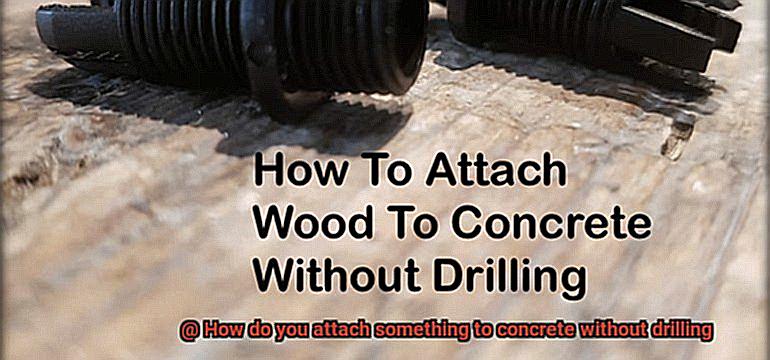
Weight and Load-Bearing Capacity:
Determining the weight of the object and ensuring that the concrete can bear the load is paramount. Concrete has a specific weight-bearing capacity, which depends on its thickness and composition. To avoid structural damage or failure, consult professionals or refer to manufacturer guidelines to determine the weight limit. Don’t push the limits – safety should always come first.
Surface Preparation:
Prepare the concrete surface diligently for a secure attachment. Clean the surface thoroughly, removing any dust, oil, or contaminants that could compromise adhesion. Think of it as creating a pristine canvas before starting a masterpiece. Utilize a wire brush or power washer if necessary and allow the surface to dry completely. A clean and dry surface is the foundation for a successful attachment.
Attachment Methods:
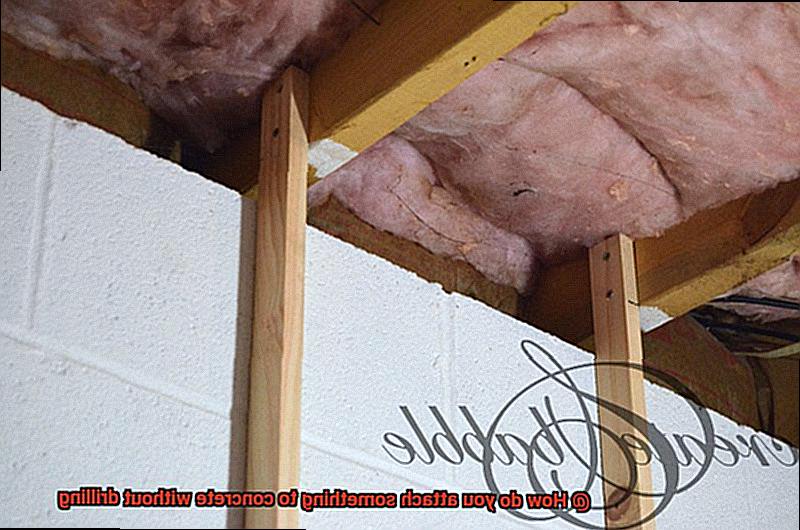
Various methods are available for attaching objects to concrete without drilling, each with its own advantages and limitations. Explore options such as adhesive anchors, epoxy glue, construction adhesives, concrete screws, and wedge anchors. Consider factors like weight, size, and desired stability when selecting the most suitable method for your specific needs.
Type of Object:
The type of object being attached plays a crucial role in determining the appropriate attachment method. Adhesive anchors or epoxy glue may be ideal for heavy mirrors or artwork, while concrete screws or wedge anchors provide better stability for shelving units or TV mounts. Assess the dimensions and weight distribution of the object to make an informed choice.
Environmental Factors:
Environmental conditions can impact the effectiveness of attachment methods. Extreme temperatures, humidity, and moisture exposure can weaken adhesion strength. Select an attachment method that is compatible with the specific environmental conditions in which the object will be placed. Additionally, consider reinforcing the attachment with additional support, such as brackets or braces, if necessary.
Permanent vs Non-Permanent Bonding Methods
Today, we embark on an exciting journey into the world of permanent and non-permanent bonding methods. Whether you seek unwavering strength or the flexibility to change your mind, we’ve got the answers you need. So strap on your adhesive goggles and prepare for an adventure like no other.
Permanent Bonding Methods:
For connections that can withstand anything life throws their way, permanent bonding methods are the superheroes you need. These methods utilize powerful adhesives and epoxy to create bonds that can handle heavy loads, harsh conditions, and even the occasional superhero showdown.
Construction Adhesive:
Imagine construction adhesive as the mighty Hulk of bonding methods, specifically formulated for concrete surfaces. With unrivaled strength and reliability, it is perfect for attaching materials that demand an unyielding bond. From heavy-duty brackets to anchors, construction adhesive has your back in any situation.
Epoxy:
Meet the dynamic duo of adhesives – resin and hardener. When combined, they unleash a chemical reaction that forms a bond as sturdy as Iron Man’s suit. Epoxy is the go-to choice for attaching metal brackets or other weighty objects to concrete surfaces. It is tough, resilient, and always ready for action.
Non-Permanent Bonding Methods:
When commitment isn’t your thing or flexibility is essential, non-permanent bonding methods come to your rescue. These methods offer temporary solutions without drilling into the concrete, allowing you to change your mind or remove attachments without leaving a trace.
Double-Sided Adhesive Tapes:
Think of double-sided adhesive tapes as the chameleons of bonding methods – adaptable and versatile. With adhesive on both sides, they forge a strong bond between your object and the concrete surface. Easy to apply and remove, these tapes are ideal for temporary installations or when you’re not quite ready to make a concrete commitment.
Hook and Loop Fasteners:
Enter the dynamic duo of bonding methods – hook and loop fasteners, also known as Velcro. With their tiny hooks and loops, they create a secure bond that can be easily detached whenever needed. These fasteners are perfect for attaching lightweight objects to concrete surfaces, granting you the freedom to change your mind whenever the city calls.
Conclusion
When it comes to attaching something to concrete without drilling, there are several options available that can save you time and effort.
One method is using adhesive anchors, which provide a strong bond between the object and the concrete surface. Another option is using concrete screws or anchors, which can be easily inserted into pre-drilled holes in the concrete.
Additionally, there are specialized fasteners designed for concrete surfaces that utilize expansion or compression to create a secure attachment.

